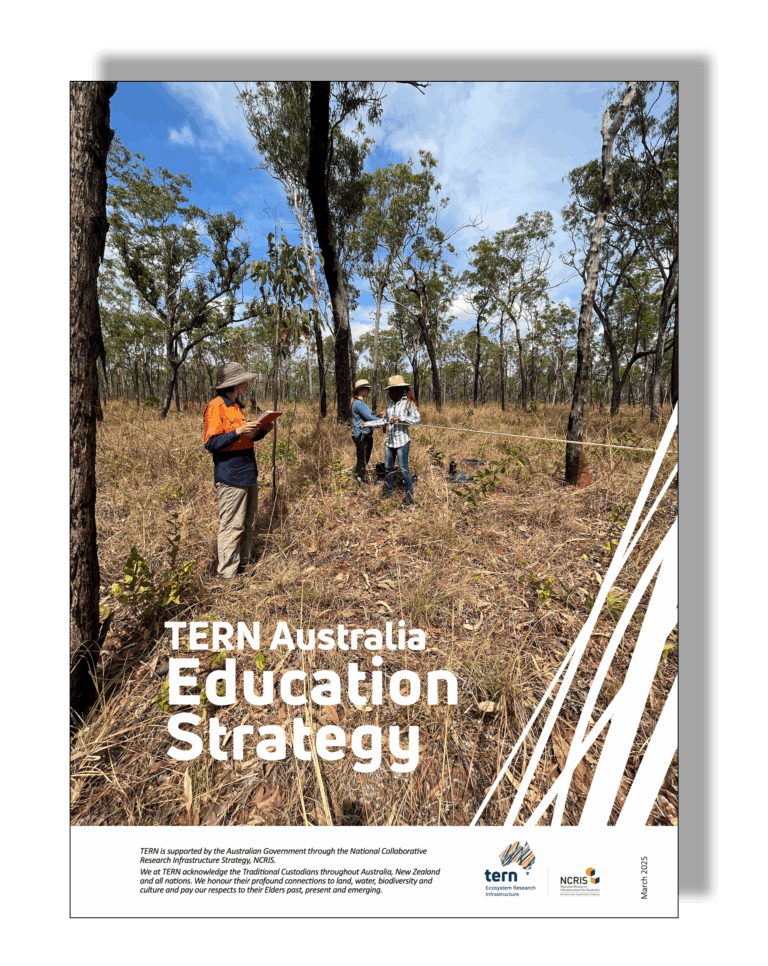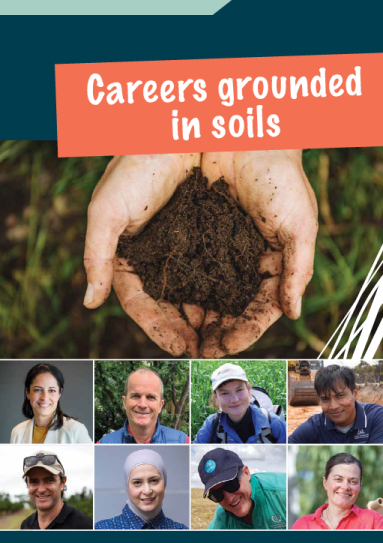Educational Resources
TERN's Education Strategy
Objectives
TERN education aims to advance understanding and contribute to managing Australia’s environment and unique ecosystems through awareness raising of our long-term environmental monitoring programs, protocols and data products.
We will do this by providing learners, educators, and, end-users, with a multitude of data-driven educational activities that can be accessed via a modular, self-paced format with online and offline options.
The TERN education approach: beginner, intermediate, and advanced
TERN tools and learning experiences are aimed at beginner, intermediate, and advanced levels. This approach enables individuals to self-define their interests and abilities regardless of their affiliations (e.g., K—12 teacher, citizen scientist, family). As individuals take more responsibility and control of their own learning, it is critical that TERN facilitates ample free-choice learning opportunities where individuals can easily access, use, and contribute to TERN products to meet their needs and interests. TERN will include in-person and virtual capabilities to enable educational and public use of the TERN ecosystem research infrastructure.
Summary of TERN educational resources within the framework
| TERN resource | Find it | Beginner | Intermediate | Advanced |
|---|---|---|---|---|
| Webinars | https://www.tern.org.au/webinars/ | |||
| TERN YouTube | https://www.youtube.com/@TERNvideo | |||
| FAIR tutorial | https://youtu.be/aXPR4MuwwkA | |||
| Sharing your data with TERN | https://youtu.be/b4FafLSontM | |||
| How to create a TERN account | https://youtu.be/HTlc0xk4zf8 | |||
| How to generate an API key | https://youtu.be/mbpaZk_sSTA | |||
| Online workshops | https://www.tern.org.au/vegetation-data-synthesis-workshop | |||
| TSX | https://tsx.org.au/tsx-resources/ | |||
| TERN knowledge hub | https://ternaus.atlassian.net/wiki/spaces/TERNSup/overview | |||
| TERN github | https://github.com/ternaustralia |
Careers Grounded in Soils
This publication was endorsed by the National Soils Advocate, The Hon. Penny Wensley AC, on the 8th of December 2022 during the launch of the TERN Australia Soil & Herbarium Collection at the University of Adelaide’s Waite Campus.
The publication contains the results of 33 interviews with people who, in 2022, have jobs relevant to soils. It is intended for use by secondary and tertiary students who are perhaps wondering what to study or which career might be satisfying – or maybe they have already chosen a
soils-related career and are keen to learn something about others who they may meet as lecturers, coworkers or employers.
The booklet will also hopefully be a useful resource for those that assist students with such decisions, including teachers, careers counsellors, guidance officers, librarians, and parents.
TERN ausplotsR tutorial
Tutorial 1: Retrieving and Filtering Data
Get started with TERN’s ausplotsR package using our introductory tutorial video. Access and filter soil and vegetation data collected at >1000 environmental monitoring sites across a range of Australian bioregions and vegetation communities. Users can also search for information on TERN’s soil and plant samples.
Educational activities at TERN sites
Modern teaching and conference facilities suitable for university and school group activities are available at a number of TERN Ecosystem Processes SuperSites. Some sites also offer an education facilitator to enhance students’ learning experiences and a number of pre-prepared curriculum-linked ecology teaching resources are available for teachers.
TERN sites regularly host students and teachers from Australia and overseas, with activities ranging from environmental education tours with primary school students through to secondary school and undergraduate field trips and internships. Many community organisations are also actively involved in conservation and rehabilitation activities at TERN sites.
For example, Credo Station, within TERN’s Great Western Woodlands SuperSite in Western Australia, has a multi-purpose field studies centre for educators and scientists. Similar facilities are available at TERN’s Calperum Mallee SuperSite in South Australia, Samford Peri-urban SuperSite in Queensland, and Cumberland Plain SuperSite in New South Wales.
At the Tahune Airwalk, within TERN’s Warra Tall Eucalypt SuperSite in Tasmania, an interpretive centre provides data and research information from the SuperSite to public visitors and school groups.
In Far North Queensland, James Cook University’s Daintree Rainforest Observatory is collocated at TERN’s affiliate Daintree Rainforest SuperSite to provide facilities for educators, researchers and students.
In the Northern Territory, a number of Charles Darwin University courses use the research infrastructure at TERN’s Litchfield Savanna SuperSite to train undergraduate and postgraduate students in remote-sensing techniques. Students are taught the same field data sampling techniques as those used by TERN researchers, enabling the students to play a role much greater than simply collecting data needed for their studies. Because students use standard methods on permanent transects, the data can be added to the SuperSite’s long-term data collection.
Community groups are also active at TERN SuperSites. At the TERN Wombat Stringybark Eucalypt SuperSite, community groups including the Wombat Forestcare Inc, the Victorian National Parks Association and the Whroo Goldfields Conservation Management Network use the site for education and outreach activities.



